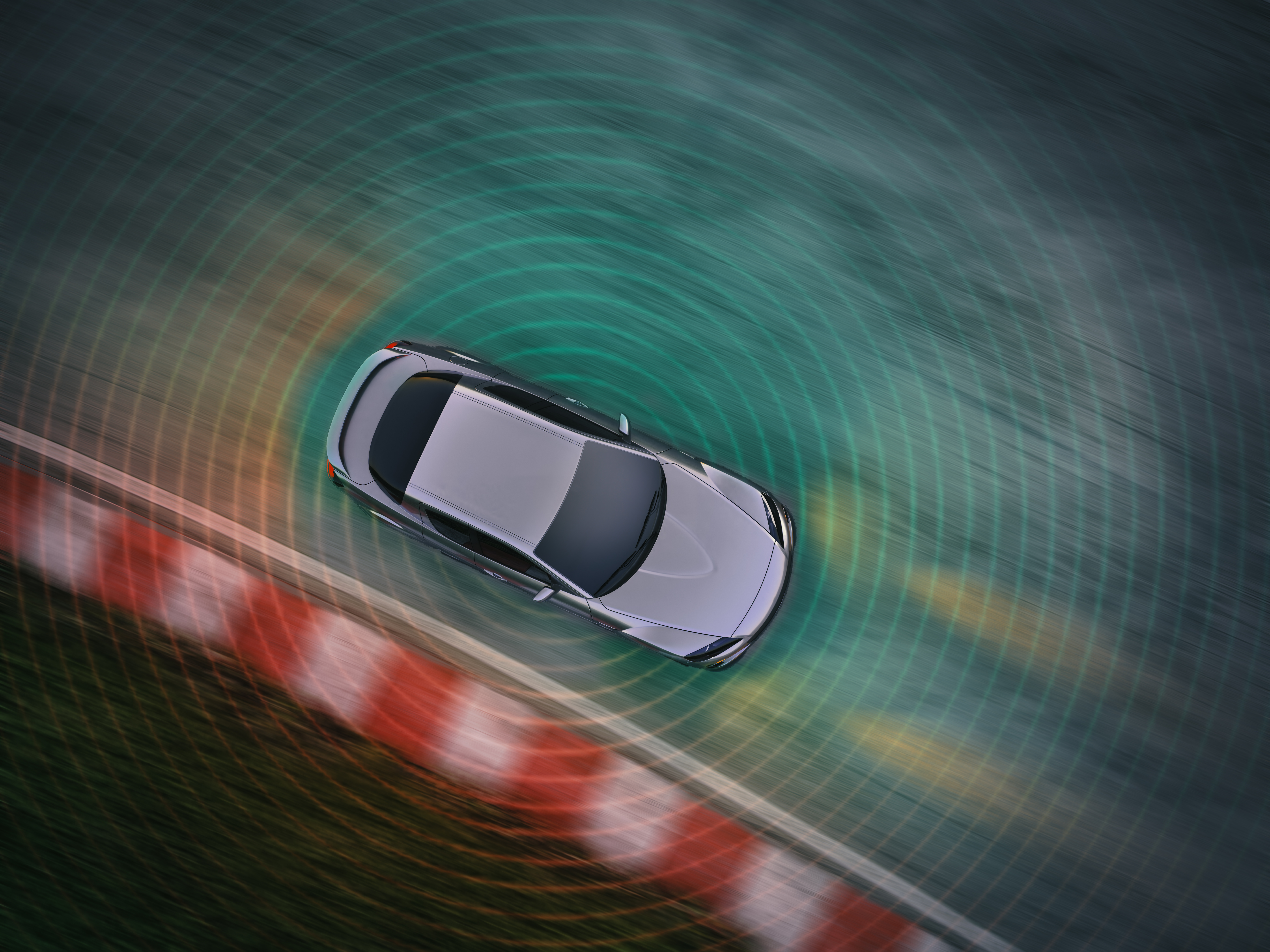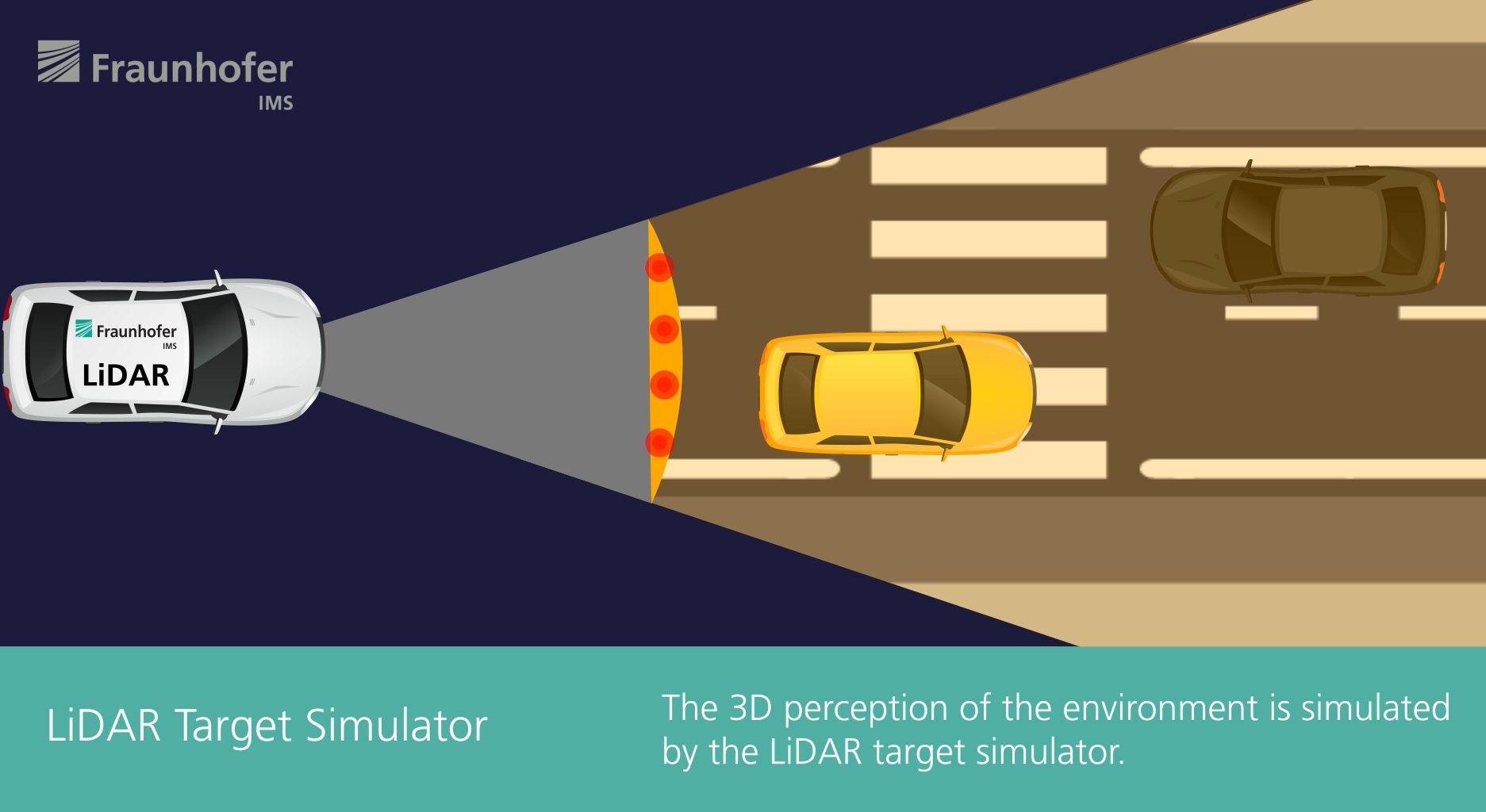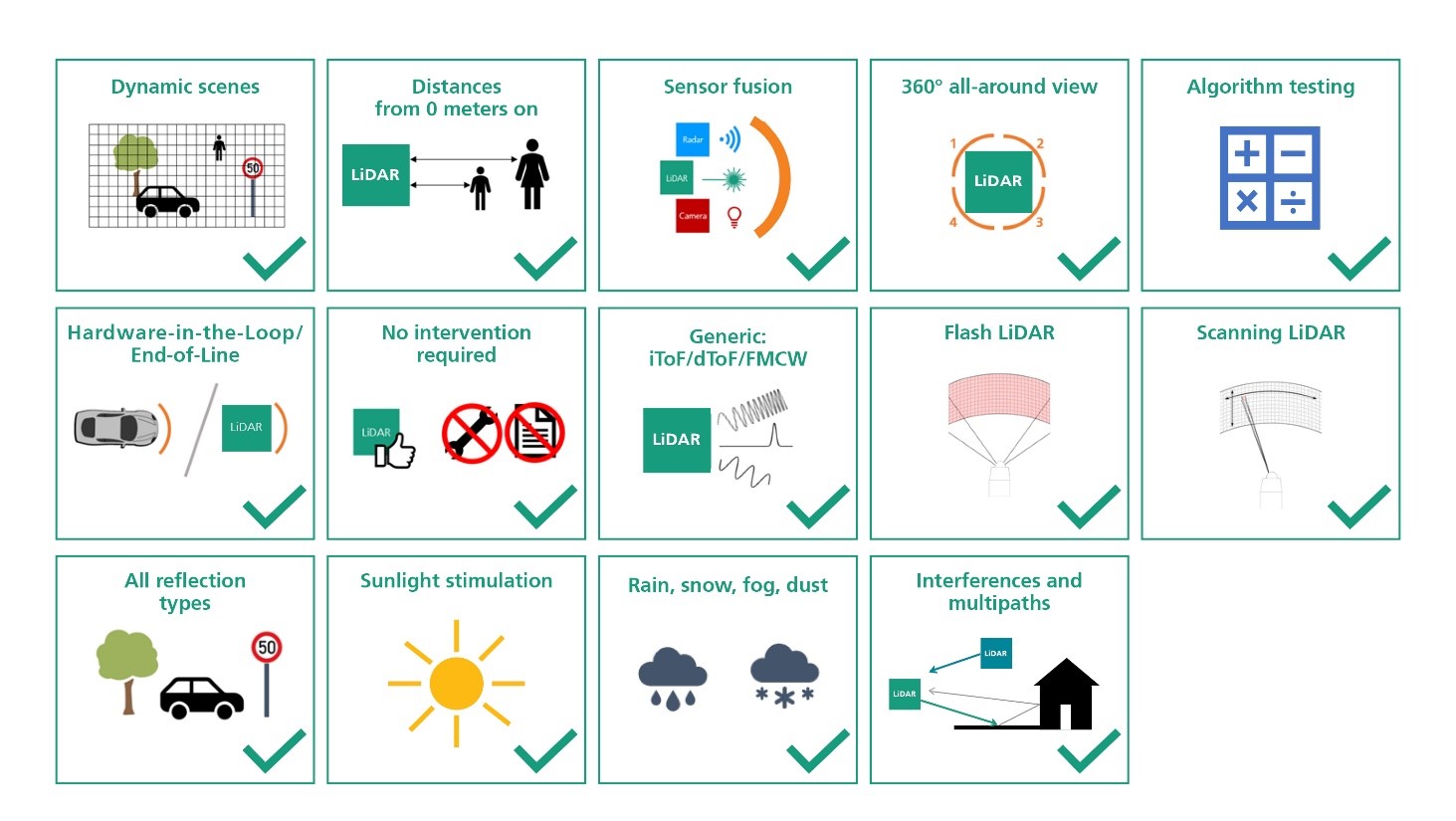The corresponding LiDAR system may already be integrated in the vehicle and incorporated in a hardware-in-the-loop (HiL) test bench, or it may be placed as a stand-alone device in front of the measurement screen. In this way, an end-of-line (EoL) test can be performed after the LiDAR has been manufactured.
Unique tests under reproducible conditions with LiDAR target emulators
The method combines the previous verification methods for driver assistance systems, real tests and virtual environment simulation in a single measurement. This combination can save an enormous amount of time while increasing the scope of testing.
The biggest advantage of the LiDAR Target Emulator is that the measurement conditions are always the same due to predefined virtual scenarios. The measurement results are thus comparable both for a sensor that has been measured several times and between different sensor solutions. Environmental conditions in particular, such as sunshine, rain or fog, are important test scenarios for LiDAR sensors and can hardly be reproduced so far in real tests or only with a great deal of effort. With the LiDAR Target Emulator these weather influences are the same for all test specimens. In addition, this measurement setup can generate a large amount of valuable test data that is required for further training and optimization of the sensor.



